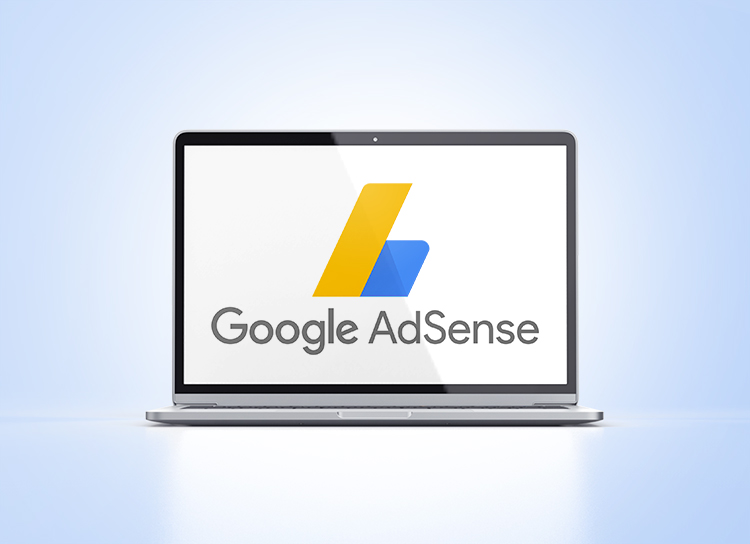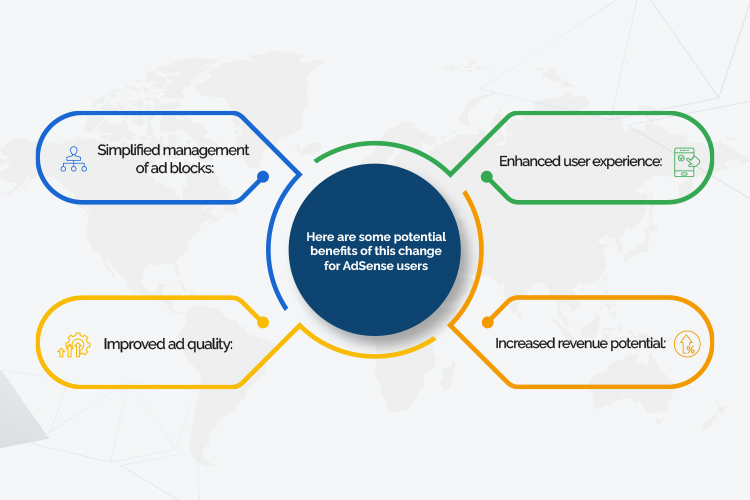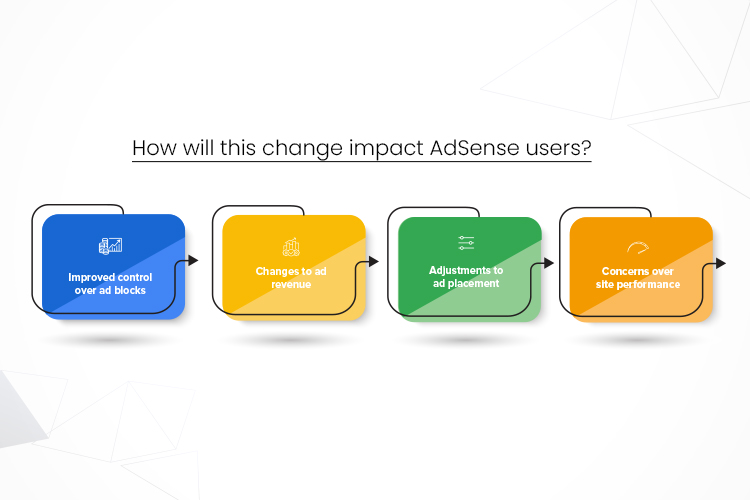Google AdSense is a program that allows website owners to earn money by displaying ads on their site. Recently, Google announced that subdomain blocks will be promoted to the domain level in three days. This means that any blocks that website owners have placed on subdomains will now apply to the entire domain. In this blog post, we will cover what Google AdSense is and how it works, what subdomain blocks are, what it means for subdomain blocks to be promoted to the domain level, why Google is making this change, how this change will impact AdSense users, and how AdSense users can prepare for this change.
The blog post will cover the following points:
- What Google AdSense is and its benefits?
- What subdomain blocks are and why are they important?
- What it means for subdomain blocks to be promoted to the domain level and how will it impact AdSense users?
- Why is Google making this change and the potential benefits for AdSense users?
- How can AdSense users prepare for this change and any potential concerns or issues?
- Tips and advice for a smooth transition?
By the end of this blog post, readers will have a better understanding of the recent changes to subdomain blocks in Google AdSense and what they need to do to ensure a smooth transition.
What is Google AdSense?

Google AdSense is a program that allows website owners to earn money by displaying targeted ads on their site. Advertisers pay Google to display their ads on relevant websites, and Google shares the revenue with the website owner. Here’s how it works:
- Website owners sign up for a Google AdSense account and receive a unique code to add to their website.
- Google uses this code to display targeted ads on the website based on the website’s content and the user’s browsing history.
Website owners earn money each time a visitor clicks on an ad or views an impression.
There are several benefits to using Google AdSense, including:
- Monetization: Website owners can earn money by displaying ads on their site, which can be a significant source of revenue for some websites.
- Targeted advertising: Advertisers can target their ads to specific audiences based on demographics, interests, and browsing history, which can increase the relevance of the ads and the likelihood of clicks.
- Easy to use: The AdSense program is easy to set up and manage, with detailed reports and analytics available to help website owners optimise their ad revenue.
- Ad formats: Google AdSense offers a variety of ad formats, including text, display, and video ads, which can be customised to fit the website’s design and content.
Google AdSense is a program that allows website owners to earn money by displaying targeted ads on their site. The program offers several benefits, including monetization, targeted advertising, ease of use, and customizable ad formats.
What are subdomain blocks?
Subdomain blocks refer to a feature in Google AdSense that allows website owners to block ads from specific subdomains on their site. A subdomain is a subset of the main domain name and is often used to organise content on a website.
For example, a blog might have a subdomain for its archives or a shopping site might have a subdomain for its support pages.
Subdomain blocks are important for several reasons, including:
- Control: Website owners can use subdomain blocks to control the types of ads that are displayed on their site and ensure that they are relevant and appropriate for their audience.
- Quality: By blocking low-quality ads or ads that are not relevant to their site, website owners can improve the overall quality of the ads displayed on their site.
- User experience: Blocking irrelevant or low-quality ads can improve the user experience on a website, which can lead to increased engagement and revenue.
What does it mean for subdomain blocks to be promoted to the domain level?
Subdomain blocks in Google AdSense allow website owners to block ads from specific subdomains on their site. They are important because they give website owners control over the ads displayed on their site, improve the overall quality of the ads, and enhance the user experience.
Historically, subdomain blocks in Google AdSense only applied to the specific subdomain where they were implemented. However, with this recent announcement, subdomain blocks will now apply to the entire domain. This means that if a website owner blocks ads on a specific subdomain, those ads will be blocked on all subdomains and pages under the same domain.
For example, if a website owner has a blog at blog.example.com and blocks ads from a specific advertiser using subdomain blocks, those ads will also be blocked on all other pages on example.com, such as example.com/products and example.com/contact.
This change will simplify the management of subdomain blocks for website owners and provide greater control over the ads displayed on their site. It will also improve the overall quality of the ads by allowing website owners to block low-quality or irrelevant ads across their entire domain.
Hence, the promotion of subdomain blocks to the domain level in Google AdSense means that blocks applied to a specific subdomain will now apply to the entire domain. This change will simplify management, provide greater control, and improve the quality of ads displayed on a website.
Why are subdomain blocks being promoted to the domain level?
Google is making this change to improve the overall quality of ads displayed on websites that use Google AdSense. By promoting subdomain blocks to the domain level, Google aims to provide website owners with greater control over the ads displayed on their site, regardless of the specific subdomain or page.
Here are some potential benefits of this change for AdSense users:

- Simplified management of ad blocks: Promoting subdomain blocks to the domain level will make it easier for website owners to manage ad blocks and ensure that unwanted or low-quality ads are not displayed on their site.
- Improved ad quality: By giving website owners greater control over the ads displayed on their site, this change could improve the overall quality of ads displayed on AdSense sites.
- Enhanced user experience: By ensuring that only relevant and high-quality ads are displayed on their site, website owners can provide a better user experience for their visitors.
- Increased revenue potential: By improving the quality of ads displayed on their site, website owners may see an increase in clicks and revenue potential.
Overall, this change represents a proactive step by Google to improve the quality of ads displayed on websites that use AdSense, and it has the potential to benefit website owners by providing them with greater control over the ads displayed on their site and improving the overall user experience.
How will this change impact AdSense users?

The impact of this change will depend on how website owners are currently using AdSense on their site. Here are some potential impacts:
-
Improved control over ad blocks:
Website owners who have been using subdomain blocks will now have the ability to manage these ad blocks at the domain level, providing greater control over the ads displayed on their site.
-
Changes to ad revenue:
Depending on the quality and relevance of the ads displayed on a website, this change may lead to an increase or decrease in ad revenue. Website owners may need to monitor their ad performance closely in the weeks following this change.
-
Adjustments to ad placement:
Website owners may need to adjust the placement of their ad blocks in response to this change to ensure that they are displayed in the most effective locations.
-
Concerns over site performance:
Some website owners may be concerned that this change could negatively impact the performance of their site, particularly if there are issues with ad relevance or quality.
To address these concerns, Google has provided resources and guidance to help website owners prepare for this change.
AdSense users can use the Ad Review Center to review and manage the ads displayed on their site and ensure that unwanted or low-quality ads are blocked.
They can also monitor their ad performance closely in the weeks following this change to identify any issues or areas for improvement.
Overall, while this change may require some adjustments on the part of AdSense users, it has the potential to improve the quality and relevance of ads displayed on their site, ultimately leading to a better user experience and increased revenue potential.
How can AdSense users prepare for this change?
To prepare for the upcoming changes in Google AdSense, there are several things that AdSense users can do to ensure a smooth transition. Some of the tips include:
-
Check the AdSense Policy Center:
AdSense users should review the AdSense Policy Center to ensure that their sites comply with Google’s policies. This will help to prevent any unexpected issues or disruptions during the transition.
-
Monitor the performance of their ad units:
AdSense users should keep an eye on the performance of their ad units during and after the transition. This will help them to identify any issues and make any necessary adjustments to optimise their ad revenue.
-
Update their ad code:
AdSense users who are using subdomain blocking should update their ad code to remove any references to subdomains. This will help to ensure that their ads continue to display properly after the transition.
-
Keep an eye on their earnings:
AdSense users should monitor their earnings closely during and after the transition to ensure that they are not negatively impacted by any changes.
To ensure a smooth transition, AdSense users may also need to take the following steps:
- Verify their site ownership: AdSense users may need to verify their site ownership to ensure that they have access to all of the necessary features and tools.
- Update their site settings: AdSense users may need to update their site settings to ensure that their ads are displayed correctly on their sites.
- Contact AdSense support: AdSense users who have any questions or concerns about the transition should contact AdSense support for assistance.
By following these tips and taking these steps, AdSense users can prepare for the upcoming change and ensure a smooth transition.
In conclusion,
This blog post has discussed the recent announcement by Google AdSense that subdomain blocks will be promoted to the domain level in three days. We have defined what Google AdSense is, explained subdomain blocks and their importance, and provided information on how this change will impact AdSense users.
Additionally, we have outlined potential benefits of this change for AdSense users and provided tips and advice on how they can prepare for this change.
To reiterate, the promotion of subdomain blocks to the domain level will likely result in better ad targeting and more revenue for AdSense users. Platforms like Blogpost.com and YouTube may also benefit from this change, as it could improve the overall user experience.
We encourage readers to share their thoughts or questions in the comments section. As always, it’s important to stay up-to-date on changes to the platforms we use and make the necessary adjustments to ensure continued success.



